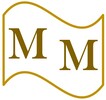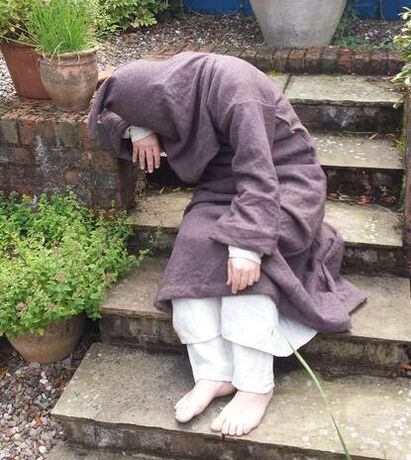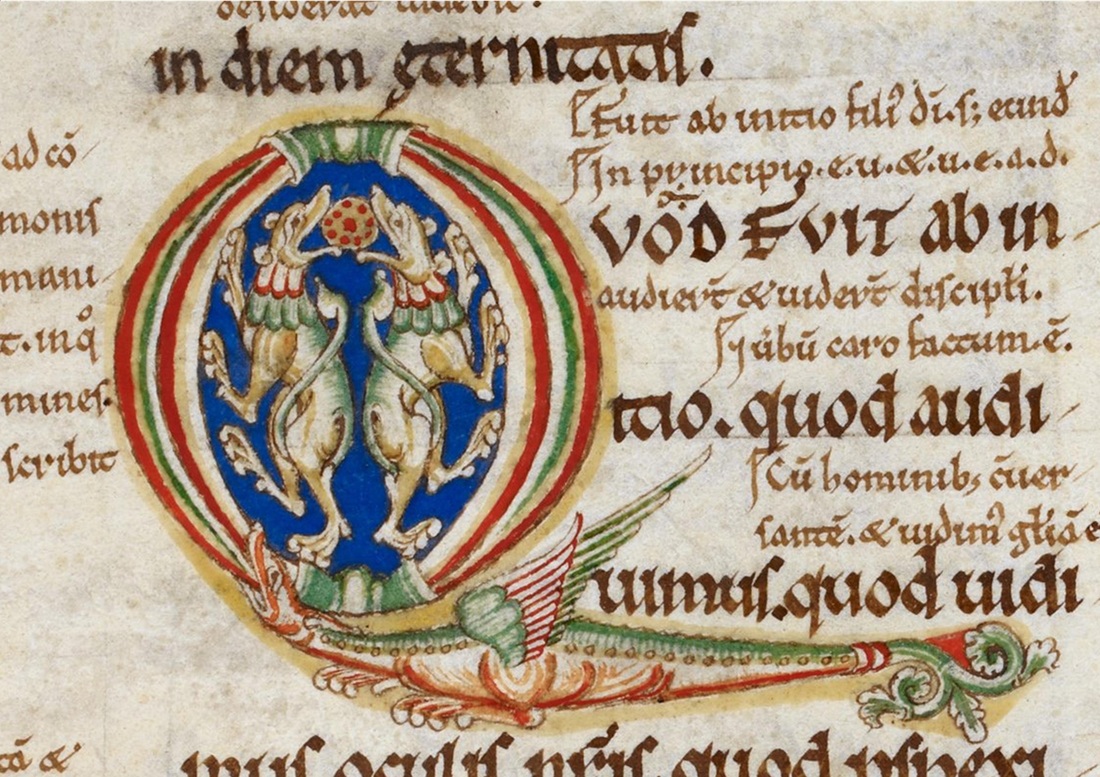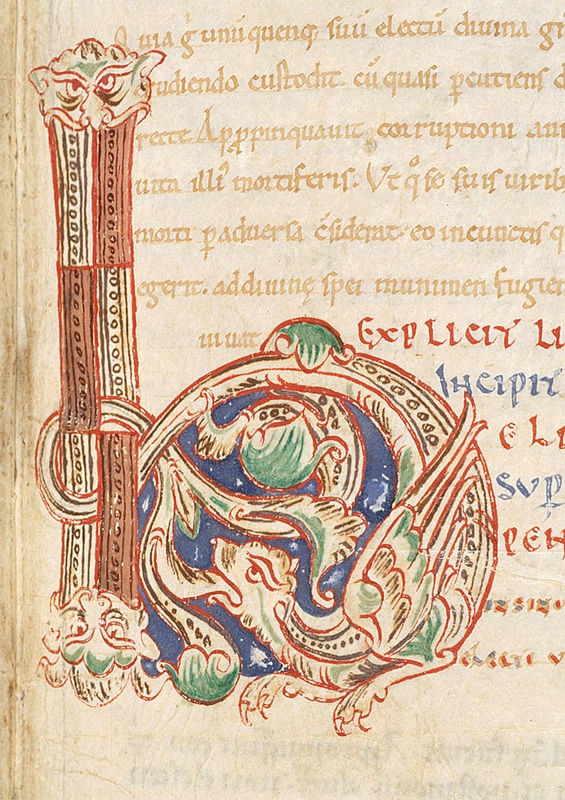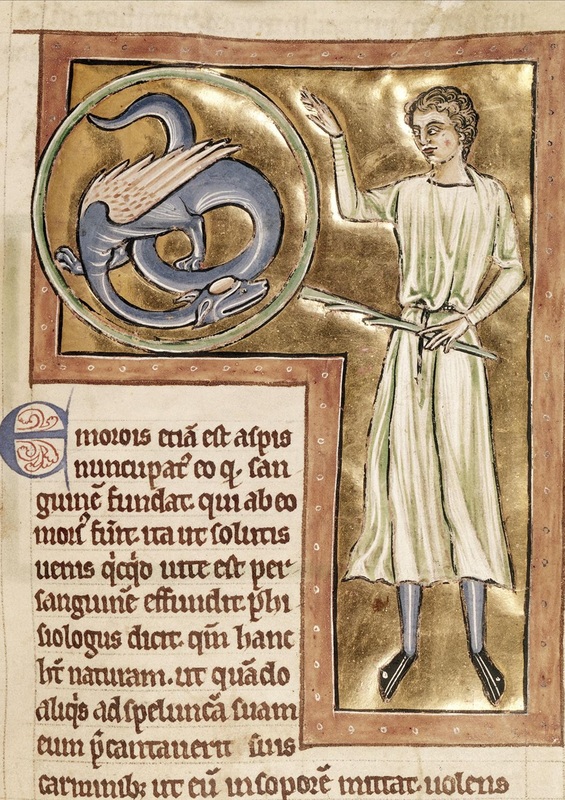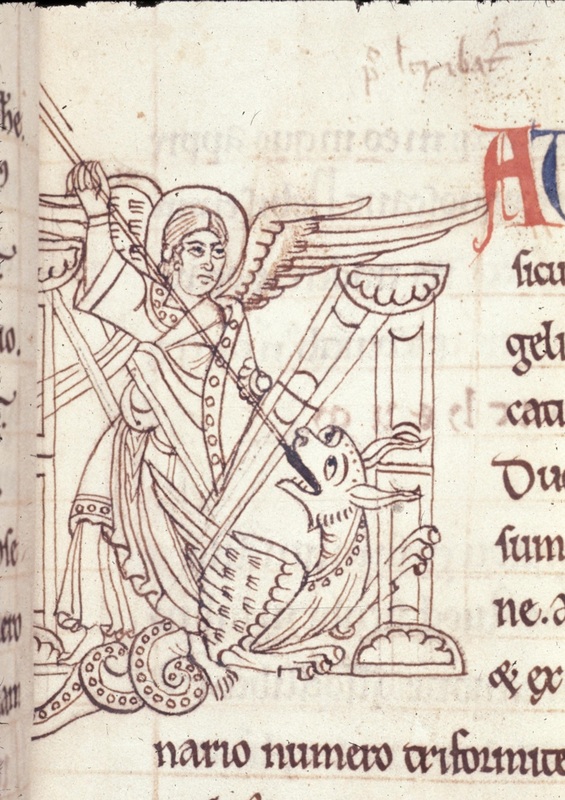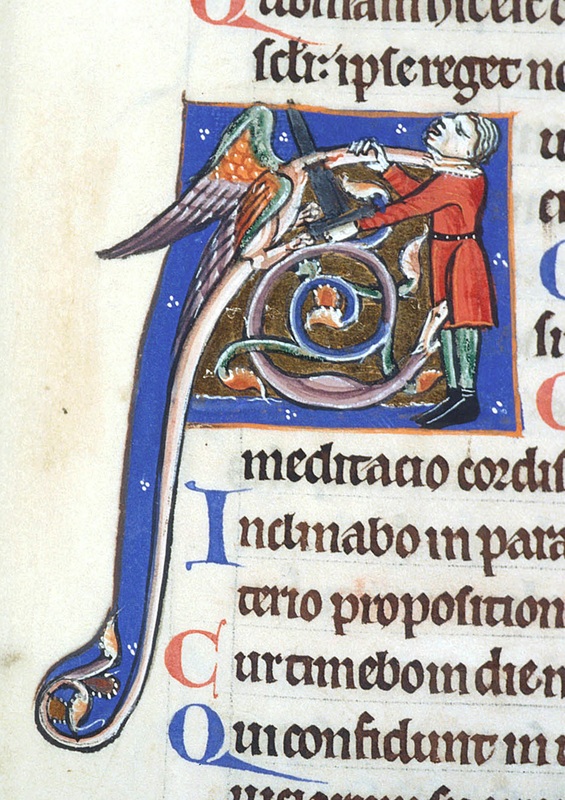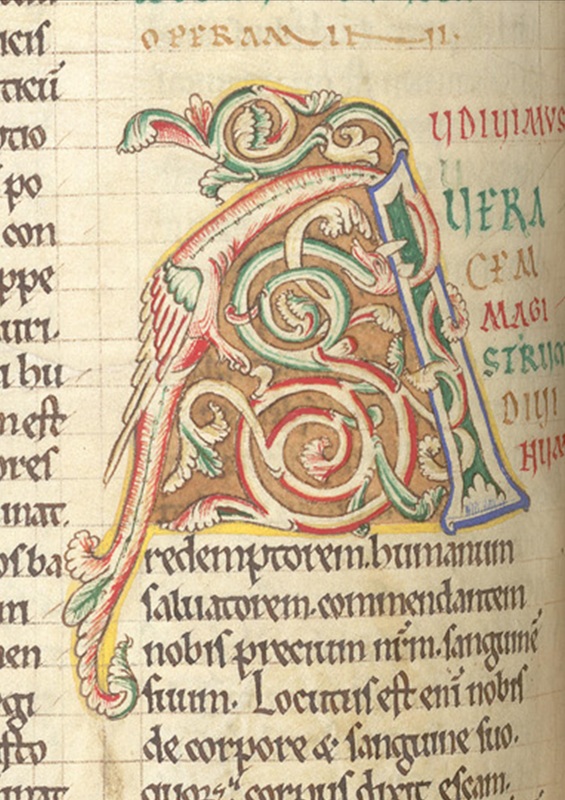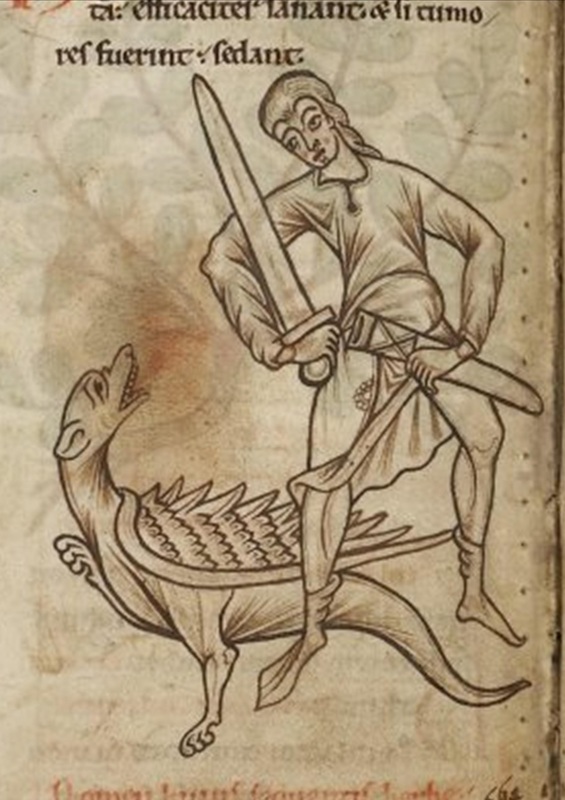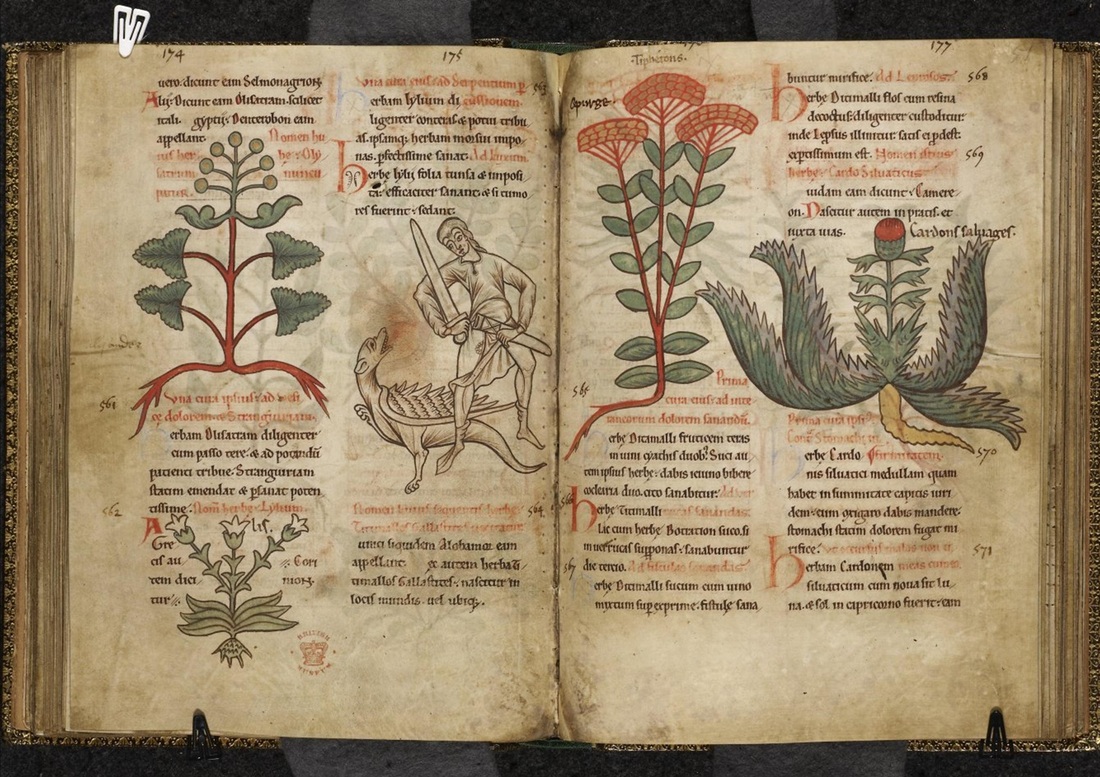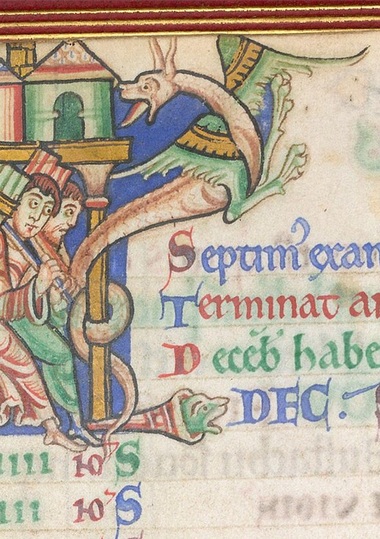 The Shaftesbury Psalter, British Library, Lansdowne 383 (England 1225-1250), folio 8v: detail of a dragon and men carrying wood The Shaftesbury Psalter, British Library, Lansdowne 383 (England 1225-1250), folio 8v: detail of a dragon and men carrying wood RON!” “DRACON!” I loved it when Merlin, played by the elfish Colin Morgan (those fabulous ears!), would command the presence of the scary-but-wise dragon. We need a few more old fire-drakes in our lives ... yes we do! I watched BBC’s Merlin pretty religiously – I am a monk in all I do. Alas! Early Saturday evenings have never quite been the same since it finished. We monks don’t get out much, you know. So to brighten up the gloomy cloisters of my mind, I thought I’d do a little something on dragons this weekend. This has nothing to do with the fact that I’m being intellectually lazy and just want to post a few pretty pictures from the British Library. No, nothing at all to do with that. Actually, I’ve been working very hard this week, and my studies have brought me into contact with a number of dragons – all new to me – and so I thought it only proper to share them with you. But before I do, just one more thing about Merlin ... Are you wondering why at the beginning I spelled dragon with a ‘c’ in the middle? Of course you are! Well, I’ve always been convinced that Morgan’s Merlin was using a Latinized version of the word. (You can disagree with me if you want – but you must leave a comment if you do.) He was always ready to use a few words of pseudo Old English whenever a bit of magic needed to be done. But I reckon when the script writers took advice (from some very lucky academic, no doubt), they decided not to go with the strictly Anglo-Saxon wyrm (from which we get the modern English ‘worm’). It would not have had quite the same ring to it, would it? I tried it myself in my back garden. My neighbours reported me. To the dragons/dracons/wyrms/worms! All images have been identified by the British Library as free from known copyright restrictions. l I call this one the Q Dragon, as he forms the tail of the letter Q (to make the word Quod). He's originally from Rochester and is dated to the first half of the twelfth century. The heads of medieval dragons are quite variable. Some look like lions, some are almost cute like a puppy. This one is a bit duck-billed, wouldn't you say? I like his knobbly, green spine which sprouts into a foliate terminus, posh words for a leafy end. His friends, by the way, are griffins. Meet Dragon H. Yes, that is the letter H, believe it or not. Capital H often appears in manuscripts like our modern lower case h. I think he (are dragons necessarily male?) is quite cute, puppy like. He seems a little in awe of the biting beasty at the top of the upright. He's also from Rochester, though from a different manuscript, which we can date to between the years 1108 and 1122. What is that man doing to that poor dragon? Looks like dragon abuse to me! This is a northern English dragon, or possibly from central England. He's from the first quarter of the thirteenth century. Now this really is dragon abuse! Yes, poor thing ... well, perhaps I should add that this is the archangel Michael defeating the dragon, who represents Satan (Revelation 12): so down the great dragon was hurled! He (we'll definitely go 'he' this time) is from Canterbury and dates to the third quarter of the twelfth century. Aha! Revenge is sweet! Meet Killer Dragon. Those needle teeth! This chap probably hails from Oxford and the first quarter of the thirteenth century. He's found in a Psalter. Dragons are almost ubiquitous in medieval liturgical books. This is Audi the Dragon. He forms the letter A for Audiviumus. (Apologies for my sadly deteriorating wit.) He is from Rochester and dates to the second quarter of the twelfth century. He has quite big ears, don't you think? I thought I would finish by providing you with incontrovertible, medieval proof that dragons were real (I think they may be extinct now). This fella, as you can see below, is found in a medical miscellany of a pharmocopeial compilation -- a herbal medicine book to you and me. As I said, incontrovertible evidence for real dragons. He does look kind of real ... a sort of medieval Komodo dragon, perhaps?
Well, that was great fun, wasn't it? There are tonnes more I could have shown you. But I do have a life, you know. Back to my scriptorium ...
3 Comments
corax
6/3/2016 09:37:52 pm
lovely blog post here. thank you for putting all this together.
Reply
The Anglo-Saxon Monk
6/3/2016 09:50:10 pm
Thank you so much for your kind words. Very much appreciated. You are quite right about my typo. Thank you for pointing it out.
Reply
11/10/2016 05:45:51 pm
Loving these arrangements! Sometimes getting the right medieval or fantasy accessory isn't easy. These <a href="http://www.mysticalcottage.com/np1-listing-dept-36150">Dragons and Fairies</a>I ran into not long ago can be a great solution for any mythical collection.
Reply
Leave a Reply. |
Details
|
